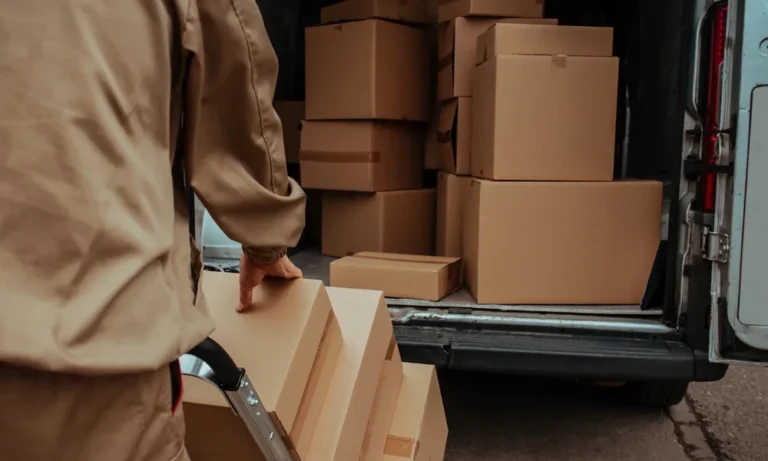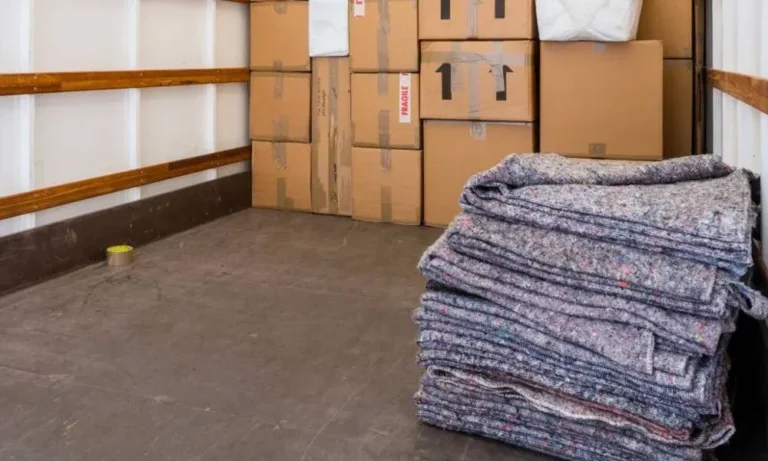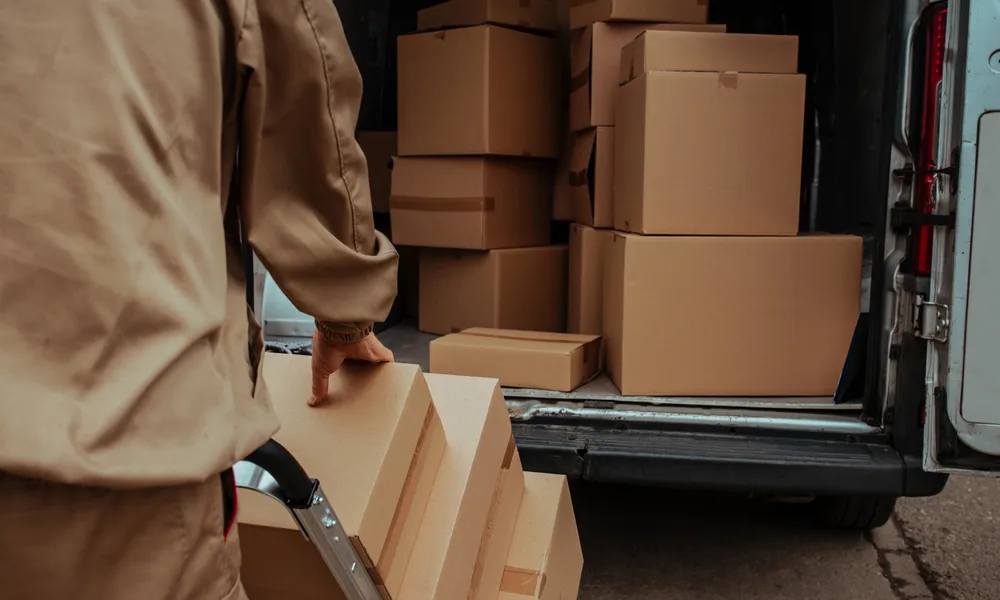How to pack a moving truck the right way can save you time, protect your belongings, and make your move much smoother. Packing a moving truck isn’t just about putting boxes inside—it’s about loading smartly to prevent damage and maximize space. With the right techniques, you can avoid common mistakes that lead to broken items or wasted time. In this guide, you’ll learn how to load items in the right order, secure everything safely, and make the most of your truck’s space. Whether it’s a short or long-distance move, proper planning is key. We’ll also cover how long it typically takes and tips for packing different truck sizes. Let’s get started on packing your moving truck like a pro.
What Do You Put in a Moving Truck First?

When it comes to loading a moving truck, the order in which you pack items is more important than you might think. A well-packed truck ensures balance, protection of your belongings, and smoother unloading at your new location. Whether you’re doing a DIY move or hiring professionals, understanding the correct loading order can save time, money, and stress.
Why the Loading Order Matters
Proper loading of a moving truck ensures the safety of your possessions while in transportation. It also makes unloading easier and prevents shifting, which can cause damage. The goal is to distribute weight evenly, avoid crushed items, and keep fragile belongings protected.
Start with the Heaviest Items First
The golden rule of packing a truck is to begin with the heaviest and bulkiest items. Place these against the wall closest to the cab (front) of the truck:
- Appliances: Load your refrigerator, washer, dryer, and dishwasher first. These items are heavy and need a solid, stable base.
- Large Furniture: Couches, bed frames, dressers, and bookshelves should come next. If at all possible, disassemble furniture to conserve room and stop movement.
Tip: To prevent scratches on your appliances and furniture, use padding and moving blankets.
Next: Mattresses and Box Springs
After loading the bulky items, place your mattress and box spring vertically along the side walls. This helps prevent other objects from moving and conserves floor space.
Load Moving Boxes Strategically
Now it’s time to stack your moving boxes. Use this order:
- Heavy boxes first: Books, tools, kitchen appliances. These create a solid base.
- Medium-weight boxes: Clothing, pantry items.
- Lightweight boxes: Linens, soft decor, pillows.
To stop boxes from slipping while in transit, make sure they are packed tightly. Don’t leave open gaps—fill them with soft items or padding.
Pro Tips for Packing a Truck Like a Pro
- Use Tie-Down Straps: Fasten every layer of objects to keep them from moving while you’re driving. Most trucks have built-in hooks to attach straps or ropes.
- Protect Fragile Items: Pack breakables in labeled boxes and place them on top of heavier items or in a designated fragile zone.
- Load Essentials Last: Items you’ll need first—like toiletries, cleaning supplies, and overnight bags—should go in last so they’re the first things off the truck.
- Create Pathways: Keep a narrow walkway for access in case you need to grab something mid-move.
You may read about What Size Truck Do I Need For Moving.
The Best Method for Packing a Moving Truck
For a relocation to go smoothly and without damage, a moving truck must be packed correctly. With the right plan and technique, you can save space, protect your belongings, and make unloading easier.
1. Plan Your Layout First
Before packing the truck, take a few minutes to plan where big and small items will go. Start by placing heavier items at the front (closest to the cab) for better weight balance.
2. Label and Sort by Room or Type
Organize boxes by room or item type. Boxes with clear labels facilitate faster unloading and unpacking.
3. Use Furniture Pads and Blankets
Use moving blankets or mats to protect appliances and furnishings. To prevent scratches during transportation, wrap fragile surfaces.
4. Disassemble Large Items
Break down beds, tables, and shelving to save space and reduce the risk of damage. Keep all screws and hardware in labeled bags.
5. Stack Boxes by Weight and Fragility
Lighter, more delicate boxes should be placed on top of heavier ones. This prevents crushing and keeps everything stable while loading the moving truck.
6. Fill Empty Spaces with Soft Items
Use pillows, blankets, and towels to fill gaps between items. This provides an additional degree of security and helps stop moving.
7. Leave a Clear Path for Unloading
Keep an aisle open if possible. It’ll help you access important items quickly and make packing and unpacking the truck more manageable.
Packing a truck doesn’t have to be stressful. With a little planning and smart organization, packing a moving truck becomes quick, safe, and efficient.
Need a Hand with Loading or Packing?
Chamomile Go offers expert help with loading a moving truck, packing services, and full moving services in Sherman Oaks and nearby areas.
How Much Time Does a Moving Truck Take to Pack?

If you’re wondering how long packing a moving truck takes, the answer depends on a few key factors. From truck size to how many helping hands you have, every move is different. However, you may load your vehicle quickly and stress-free if you have the proper plan.
Factors That Affect Packing Time
- Size of the Truck: A 10-ft truck is faster to pack than a 26-ft one.
- Number of Items: More time means more boxes and furnishings.
- Help Available: More helpers = faster packing.
Average Time Estimates
Here’s a general guide based on home size:
- Studio or 1-Bedroom: 1.5 – 3 hours
- 2–3 Bedroom Home: 3 – 5 hours
- 4+ Bedroom Home: 5 – 8 hours
These times assume items are already packed and ready for loading a moving truck.
Tips to Save Time While Packing a Truck
- Pack Before the Truck Arrives: Have boxes sealed, labeled, and organized.
- Assign Roles: One person loads, one stacks, others bring items.
- Use a Hand Truck or Dolly: This speeds up moving heavy items.
Packing a truck is faster and easier when you’re prepared. With the right tools, team, and plan, you’ll load up and be on the road in no time.
How to Pack a 16 ft Moving Truck
A 16 ft moving truck is a great size for a 2–3 bedroom home. But to get the most out of your space and protect your belongings, it’s important to load it the right way. Here’s how to pack efficiently and safely.
Layout Strategy: Use Every Inch Wisely
When packing a moving truck this size, your layout makes all the difference:
- Place Large Items First: Load heavy furniture and appliances against the truck’s walls, closest to the cab. Think couches, dressers, washers, and refrigerators.
- Stack Boxes in Rows: Put heavier boxes on the bottom, lighter ones on top, and line them up between large furniture for a tight fit.
- Balance the Weight: Keep heavy items spread evenly to avoid shifting during the drive.
Tips to Maximize Space
- Use Vertical Space: Stand tall items like mattresses, bookshelves, or headboards upright to save floor space.
- Tie Down Each Section: After loading a few rows, secure them with straps to keep items from tipping over.
- Fill Gaps with Soft Items: Use cushions, bedding, or packed duffel bags to fill holes between items and prevent movement.
Final Advice
A 16 ft truck gives you solid space, but how you pack it matters. Use a step-by-step plan, secure everything tightly, and protect fragile items with padding. With smart stacking and strategy, packing a truck becomes faster and safer.
How to Pack a Moving Truck for Long Distance
Packing a moving truck for a long-distance move takes more planning than a local move. Since your belongings will be on the road for hours—or even days—it’s essential to pack securely, efficiently, and with access in mind.
Key Tips for Long-Distance Truck Packing
1. Wrap Fragile Items Twice
Use bubble wrap, blankets, or foam to double-wrap glassware, electronics, and breakables. Long drives increase the chance of bumps and vibrations, so added protection is a must.
2. Avoid Loose Packing
Pack everything tightly. Empty spaces cause items to shift and break. Fill gaps with soft items like pillows, towels, or clothing bags.
3. Balance the Weight Evenly
Distribute weight from side to side and front to back. This helps the truck drive safely and prevents swaying or tipping during turns or sudden stops.
Pro Packing Techniques
- Use Plastic Bins: They’re stronger than cardboard and stack better, reducing the risk of collapse during long trips.
- Label Essentials Clearly: Mark boxes you’ll need first (cleaning supplies, bedding, tools) so they can be unloaded right away.
- Secure Each Section: Use tie-down straps after each layer to prevent movement.
Must-Have Items for Long Distance Moves
- Emergency Access Kit: Include a flashlight, first-aid items, snacks, and chargers—just in case.
- Overnight Bag: Keep clothes, toiletries, and important documents with you. Don’t pack them in the truck.
Final Thought
Smart packing of a moving truck helps prevent damage, saves space, and makes unloading easier. Always load heavy items first, balance the weight, and secure everything with straps. Use soft items to fill gaps and avoid shifting during transit. Label your boxes clearly and keep essentials accessible. Don’t forget to double-wrap fragile items for long-distance moves. If you’re short on time or need extra hands, professional help can make all the difference. Need help loading? Contact us for expert packing and moving services in Sherman Oaks and surrounding areas.
FAQs
Find Us
Office Address
Los Angeles, California
Office Phone
+1 310-895-3517
Email Address
Chamomilemoving@gmail.com


